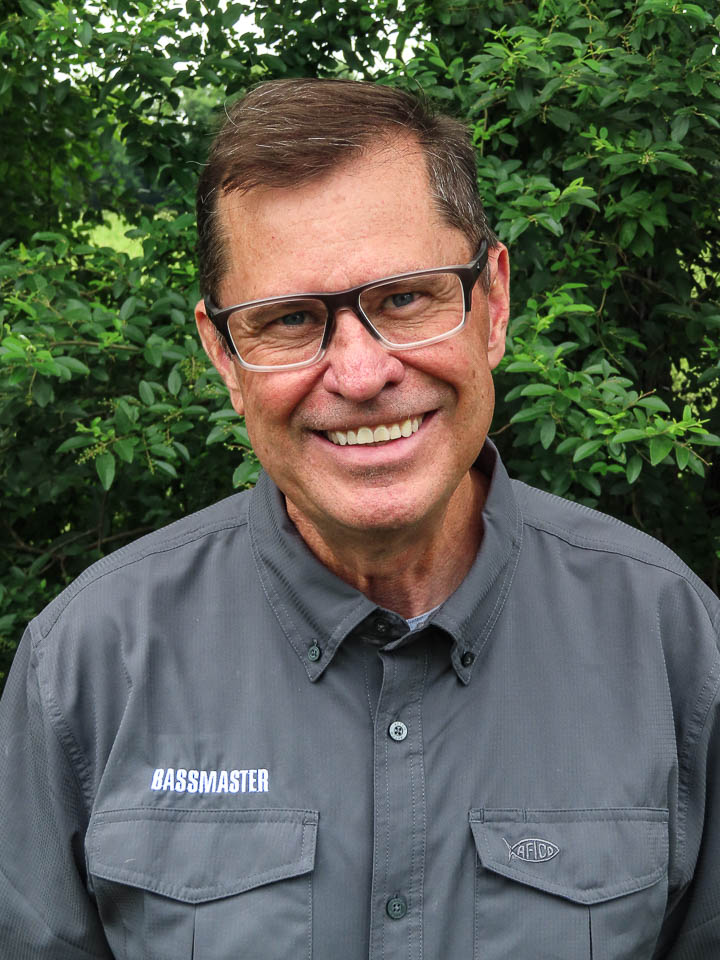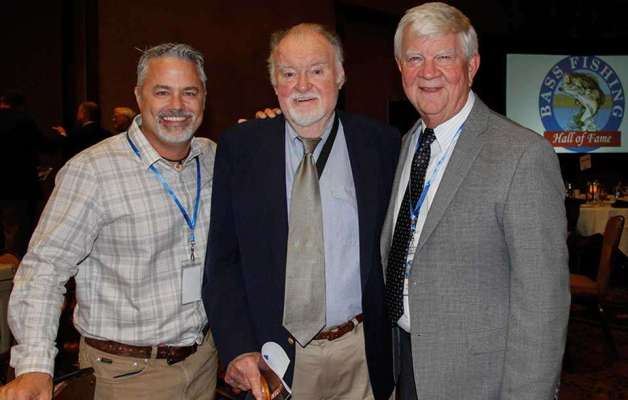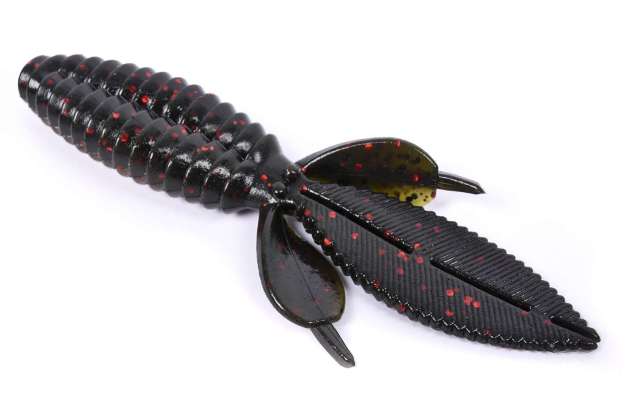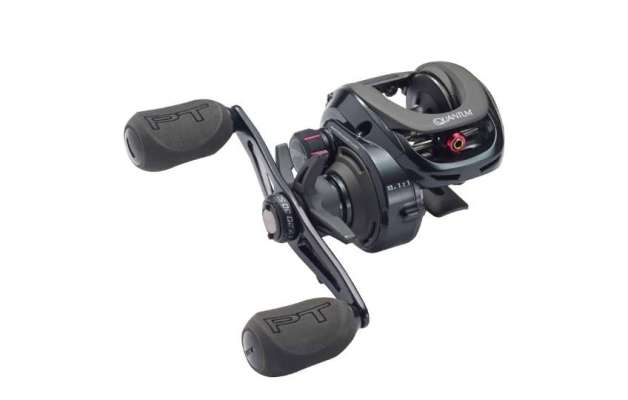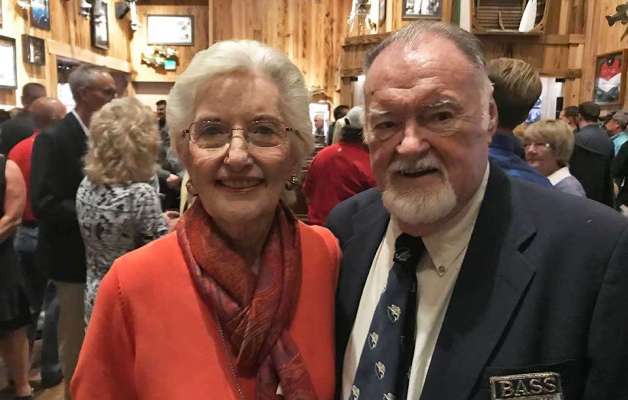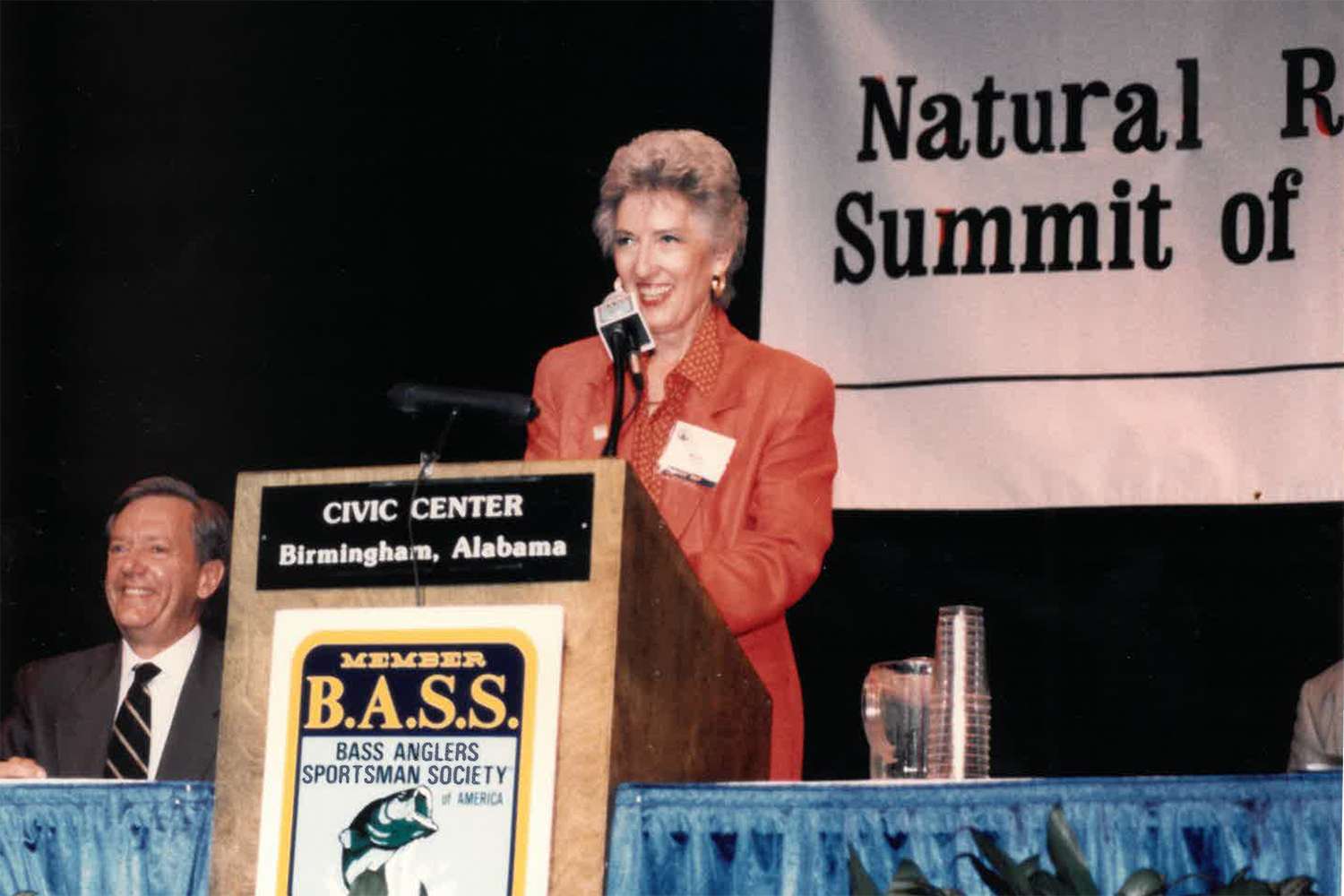
B.A.S.S. had 9,000 members in July 1970 when Ray Scott called on business acquaintance Morris Dees, who ran a successful direct marketing business in Montgomery, Ala. Scott knew nothing about direct marketing except that it could increase memberships.
During the meeting, Scott asked Dees, “How do you break even with direct mail?” The answer came from down the hallway. Dees introduced Scott to a young brunette with a wide smile named Helen Sevier. After four years her business savvy helped Fuller & Dees build an empire from marketing cookbooks for Southern Living.
Later that year, Scott hired Sevier as the second fulltime B.A.S.S. employee. The first was Bob Cobb, hired by Scott as the editor of Bassmaster Magazine. Sevier became marketing director with the goal of increasing membership. She exceeded beyond expectations.
B.A.S.S. membership more than doubled to 20,000 the year after Sevier was hired. Memberships broke the 500,000 mark by 1990. In 1986, with an investment group Sevier assumed ownership of B.A.S.S. With it came the title of President and CEO.
Under Sevier’s leadership, B.A.S.S. reached significant milestones that fueled the growth of the fishing industry. During her three full decades of service B.A.S.S. published six full-color magazines, grew to 3,000 the clubs enrolled in the grass-roots network, and brought exciting new formats to the tournament trail, including a season payout of $6 million. Non-endemic sponsors infused the industry and B.A.S.S., bringing even more notoriety outside the membership base. Sevier also served on numerous industry and government boards in the interest of conservation and public access to fishing.
Here is Sevier’s story as told in her own words.
Explain your job at Morris & Dees and how it led to the hire by Scott.
For Southern Living we published in cookbook form home-tested recipes from subscribers. In less than three years, we had 800,000 subscribers involved and sold a lot of cookbooks. Things went so well Times Mirror in Los Angeles acquired us, so by then I was ready to make a move. I had already heard about Ray and the timing was good for everybody involved.
Describe the early days on the job in what was at the time very much a man’s world.
It was an interesting scenario. Ray was the showman with the tournaments and we had Bob, who was the product with the magazine. Then we hired Harold (Sharp) to run the tournaments and Ray became more interested in the business. The neat part was each of us had an area of expertise. We worked together while respecting our individual skills. I never felt intimidated at all because we just gelled so well together.
The early advertising campaigns were highly successful. How and why?
Whenever Field & Stream or Outdoor Life published fishing features we ran ads against that editorial. Referrals were the core of what made the cookbooks successful, so I tried it with the membership campaigns. We had the campaign around “Not every fisherman can wear this patch, can you?” So we used the B.A.S.S. patch in those ads as a badge of pride and exclusivity. The domino effect of referring members worked well, because if you were a fisherman you knew another. And both of you wanted to be better anglers.
As membership grew so did the pride of wearing the embroidered member patch, displaying the decal on a vehicle. How did that permeate throughout the organization?
Through those ad campaigns the B.A.S.S. patch became our identity and a source of pride for the members. From then on I wanted to make our members feel like they were part of an organization they owned. If you look at what we achieved it was a reaction to what the members wanted, be that magazines, events, everything.
That included the tournaments and especially in the 80s and 90s. How did that decade shape the future of tournaments?
Tournaments were chugging along and we knew it was time to take those to another level. Harold and then Dewey Kendrick listened to the fishermen. We started the advisory board. Stepping out of our comfort zone meant taking risks. We took the Classic outside the South and it was a huge success. So were MegaBucks and the Top 100. By then we had non-endemic sponsors joining us in shaping the future of tournaments. And of course, that led us into TV, and we gained non-endemics and more members.
Membership growth and Bassmaster circulation were symbiotic. When did you realize it time to bring non-endemic sponsors and advertisers to the industry?
As 500,000 members came into view we also discovered that was the mark the non-endemics needed to justify advertising in a print publication. So we went all out on pushing the membership in that direction. Things fell into place quickly especially and the TV show played a big part in that.
Chevrolet came on board, then BP, Wrangler, Rubbermaid and others. What attracted those brands beyond the event marketing?
Interestingly enough someone said we were a small company that casts a big shadow. That was true because we strived to know more about bass fishing than anyone else in the industry. In some ways small helped us get there. Chevrolet, for example, recognized the impacts of their sponsorships by seeing their trucks at our tournaments. The pride of belonging to B.A.S.S. brought with it a brand loyalty among the members. That became very attractive to the non-endemics.
How did the idea for the TV show come about?
The idea was to drive memberships through TV. In 1984 we started that process by placing ads on a new network called TNN (The Nashville Network). Then we envisioned producing an infomercial inside a TV special about the Classic, so we had editorial wrapped around the ads.
Then came The Bassmasters TV series. How did that evolve?
We already were shopping for a TV home and I met with David Hall, the founder of TNN and the audience was a perfect fit for us. Back then it was funny because when I told Ray we were getting into TV he thought it was a one-off special. And then we moved Bob Cobb to produce The Bassmasters series and it became a hit. By the 1990s a single airing of The Bassmasters was getting 1 million viewers on TNN. It obviously created an unbelievable boom for our membership growth.
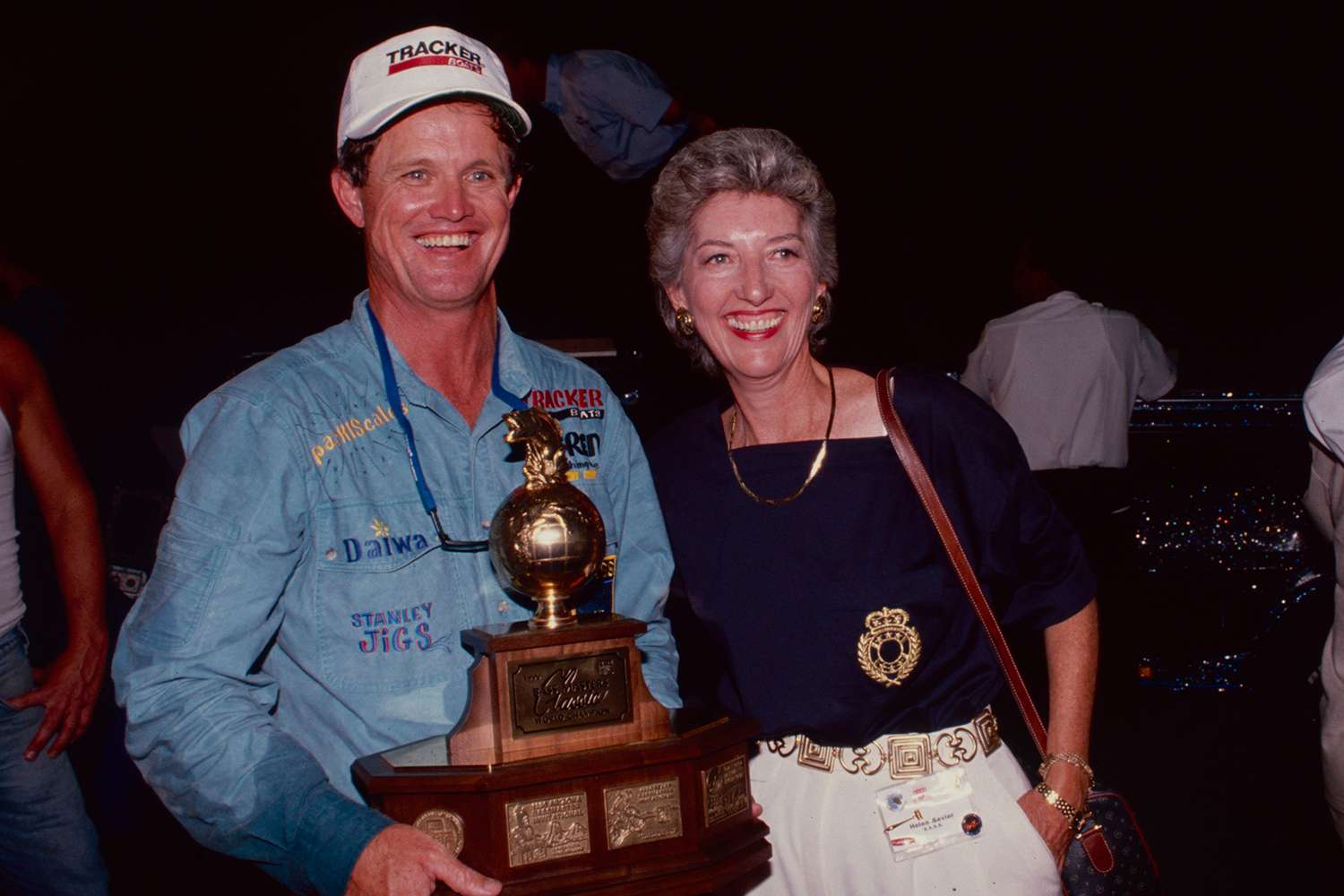
Why was membership growth so important?
It went back to two of Ray’s founding principles. It began with organizing bass fishermen into a common group. Then it was making the sport more enjoyable by sharing information, be that tournaments, publications or clubs. And most of all, it meant preserving the future of the sport through a strong voice in conservation.
When did the idea come to you about acquiring B.A.S.S. from Ray?
It was interesting that Ray from time to time would have me shop it. He was growing anxious about what to do next, because that’s what an entrepreneur does. In 1983 I had it lined up to be bought by the Bank of Boston. I called on them and the address was on Milk Street. The thought came to my mind they would milk it down to nothing. It just about broke my heart.
Obviously, the deal fell through. What happened?
I wasn’t getting anywhere with the Bank of Boston, because they didn’t understand bass fishing. A direct mail friend out of nowhere asked why I didn’t buy it. The thought had never crossed my mind, but I thought why not? He introduced me to John Jemison, an investor in Birmingham. He was ready to fund the sale and then Ray backed out of the deal. That was in 1983.
You went on to say that John Jemison remained interested in a deal. What happened next?
Ray came back in 1986 ready to sell and I thought emotionally I didn’t want to go through it all again, because I cared so much for B.A.S.S. There were two other interested players but I knew in my heart those weren’t the right fit. No one else knew about the dreams and aspirations of B.A.S.S., and I wanted to be part of it. So we put together the deal with the Jemison’s, who thankfully remained interested like me for the future of B.A.S.S.
As CEO and president you remained involved in the daily management of B.A.S.S. Why?
I never thought about the difference between owning and not being part of the daily business. I always thought about it being an ‘us’ and not a ‘me.” It was pure joy crossing over my involvement between personal and business.
What was your most meaningful milestone?
After 30 years that’s difficult to choose one thing. On the business side it was getting non-endemic companies to recognize us as marketers to national brands. Beyond that it was the (Bassmaster) CastingKids program. I never expected us to reach more than 1 million children so soon. Even more rewarding was it being driven by the Federation, whom we often called the backbone of B.A.S.S.
You avoid taking much credit for those milestones reached along the way. Why?
What was most rewarding was seeing the passion of our people at work. We called it B.A.S.S. Class. What we achieved with such a small staff, even in the 1990s, was amazing to see. Our staff worked from the heart. Watching people excel at something they loved was most rewarding. I tell people that for 30 years I had a job that I loved, every day.

